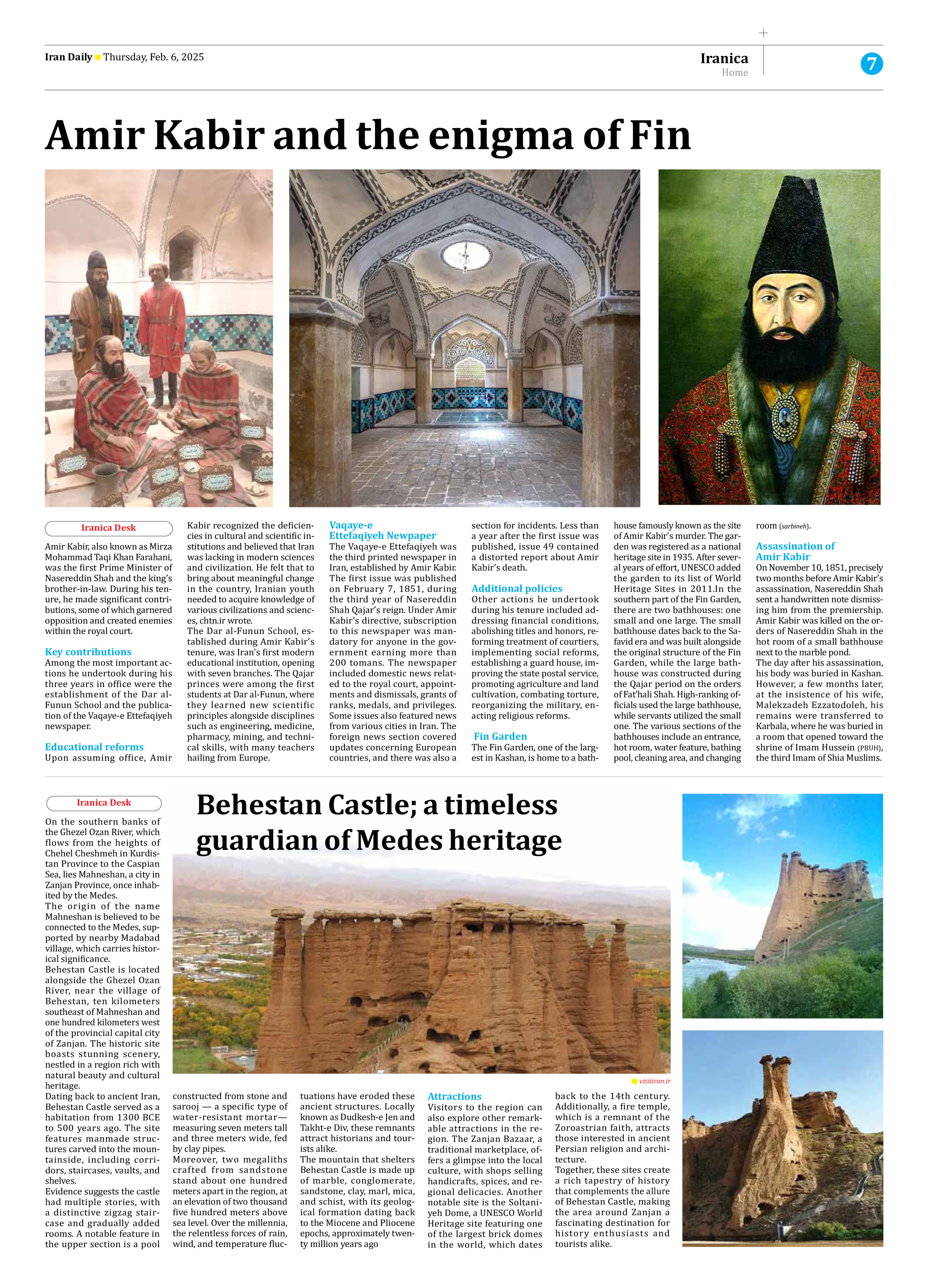
Amir Kabir and the enigma of Fin
Amir Kabir, also known as Mirza Mohammad Taqi Khan Farahani, was the first Prime Minister of Nasereddin Shah and the king’s brother-in-law. During his tenure, he made significant contributions, some of which garnered opposition and created enemies within the royal court.
Key contributions
Among the most important actions he undertook during his three years in office were the establishment of the Dar al-Funun School and the publication of the Vaqaye-e Ettefaqiyeh newspaper.
Educational reforms
Upon assuming office, Amir Kabir recognized the deficiencies in cultural and scientific institutions and believed that Iran was lacking in modern sciences and civilization. He felt that to bring about meaningful change in the country, Iranian youth needed to acquire knowledge of various civilizations and sciences, chtn.ir wrote.
The Dar al-Funun School, established during Amir Kabir’s tenure, was Iran’s first modern educational institution, opening with seven branches. The Qajar princes were among the first students at Dar al-Funun, where they learned new scientific principles alongside disciplines such as engineering, medicine, pharmacy, mining, and technical skills, with many teachers hailing from Europe.
Vaqaye-e
Ettefaqiyeh Newpaper
The Vaqaye-e Ettefaqiyeh was the third printed newspaper in Iran, established by Amir Kabir. The first issue was published on February 7, 1851, during the third year of Nasereddin Shah Qajar’s reign. Under Amir Kabir’s directive, subscription to this newspaper was mandatory for anyone in the government earning more than 200 tomans. The newspaper included domestic news related to the royal court, appointments and dismissals, grants of ranks, medals, and privileges. Some issues also featured news from various cities in Iran. The foreign news section covered updates concerning European countries, and there was also a section for incidents. Less than a year after the first issue was published, issue 49 contained a distorted report about Amir Kabir’s death.
Additional policies
Other actions he undertook during his tenure included addressing financial conditions, abolishing titles and honors, reforming treatment of courtiers, implementing social reforms, establishing a guard house, improving the state postal service, promoting agriculture and land cultivation, combating torture, reorganizing the military, enacting religious reforms.
Fin Garden
The Fin Garden, one of the largest in Kashan, is home to a bathhouse famously known as the site of Amir Kabir's murder. The garden was registered as a national heritage site in 1935. After several years of effort, UNESCO added the garden to its list of World Heritage Sites in 2011.In the southern part of the Fin Garden, there are two bathhouses: one small and one large. The small bathhouse dates back to the Safavid era and was built alongside the original structure of the Fin Garden, while the large bathhouse was constructed during the Qajar period on the orders of Fat’hali Shah. High-ranking officials used the large bathhouse, while servants utilized the small one. The various sections of the bathhouses include an entrance, hot room, water feature, bathing pool, cleaning area, and changing room (sarbineh).
Assassination of
Amir Kabir
On November 10, 1851, precisely two months before Amir Kabir’s assassination, Nasereddin Shah sent a handwritten note dismissing him from the premiership. Amir Kabir was killed on the orders of Nasereddin Shah in the hot room of a small bathhouse next to the marble pond.
The day after his assassination, his body was buried in Kashan. However, a few months later, at the insistence of his wife, Malekzadeh Ezzatodoleh, his remains were transferred to Karbala, where he was buried in a room that opened toward the shrine of Imam Hussein (PBUH), the third Imam of Shia Muslims.







